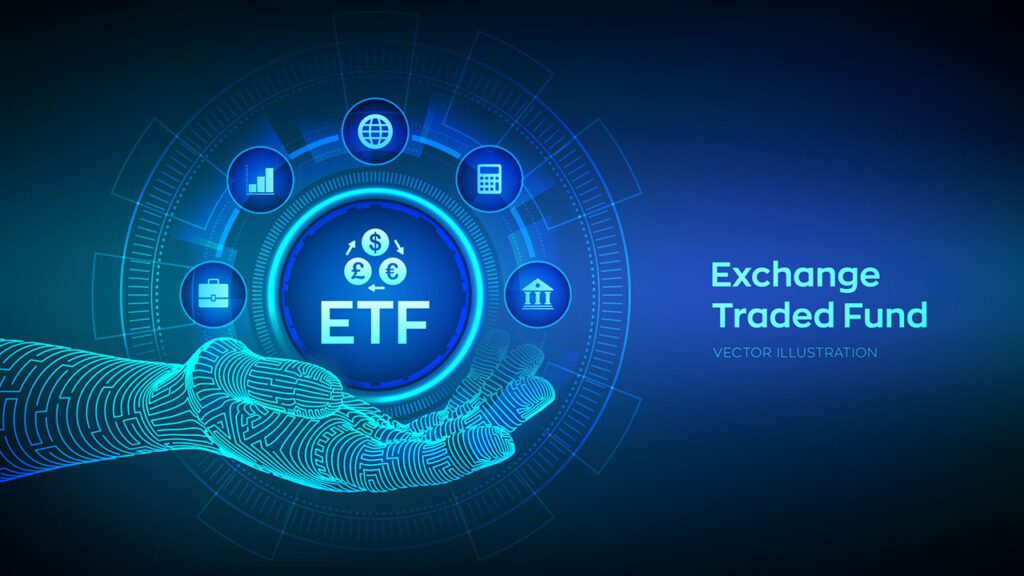Riding the Bitcoin ETF Rally: 10 Ways to Maximize Gains
The cryptocurrency market has witnessed significant growth in recent years, with Bitcoin leading the charge. As of September 2025, Bitcoin’s price has surged to new heights, surpassing $122,000, making it the world’s fifth-largest asset by market capitalization. This rally has attracted both seasoned and new investors seeking to capitalize on Bitcoin’s upward trajectory.
One of the most accessible ways to invest in Bitcoin is through Exchange-Traded Funds (ETFs). These financial instruments allow investors to gain exposure to Bitcoin without directly purchasing the cryptocurrency. In this guide, we’ll explore how to ride a Bitcoin rally using ETFs, focusing on strategies, top-performing ETFs, and considerations for U.S. investors.
Understanding Bitcoin ETFs
What Is a Bitcoin ETF?
A Bitcoin ETF is a fund that tracks the price of Bitcoin, allowing investors to buy shares that represent ownership in the fund. This provides exposure to Bitcoin’s price movements without the need to directly own or store the cryptocurrency. There are two primary types of Bitcoin ETFs:
- Spot Bitcoin ETFs: These ETFs hold actual Bitcoin and aim to reflect the current market price.
- Futures-Based Bitcoin ETFs: These ETFs invest in Bitcoin futures contracts, which are agreements to buy or sell Bitcoin at a future date.
Benefits of Investing in Bitcoin ETFs
Investing in Bitcoin ETFs offers several advantages:
- Accessibility: ETFs can be purchased through traditional brokerage accounts, making them accessible to a wide range of investors.
- Liquidity: ETFs are traded on major exchanges, providing liquidity and flexibility.
- Regulatory Oversight: ETFs are subject to regulatory scrutiny, offering a layer of security for investors.

Riding the Bitcoin Rally with ETFs
1. Choose the Right Bitcoin ETF
Selecting the appropriate Bitcoin ETF is crucial. As of September 2025, some top-performing Bitcoin ETFs include:
- iShares Bitcoin Trust ETF (IBIT): This ETF seeks to reflect the performance of Bitcoin’s price and has shown significant growth since its inception.
- ProShares Bitcoin ETF (BITO): As the first U.S. Bitcoin-linked ETF, BITO offers investors exposure to Bitcoin through a familiar ETF structure.
- How to Buy Bitcoin Safely 2026 – Secure USA Crypto Guide
- Bitcoin price prediction 2026: Bull, Bear & Realistic Paths
2. Monitor Market Trends
Staying informed about market trends is essential. In 2025, Bitcoin’s price has been influenced by various factors, including institutional adoption and macroeconomic conditions. For instance, Bitcoin’s price reached a new all-time high above $122,000 in July 2025, driven by increased investor interest.
3. Implement Risk Management Strategies
While the potential for high returns exists, it’s important to manage risks effectively. Consider diversifying your investment portfolio and setting stop-loss orders to protect against significant downturns.
Tax Implications of Bitcoin ETF Investments
Investing in Bitcoin ETFs has tax implications that U.S. investors should be aware of. The Internal Revenue Service (IRS) treats Bitcoin as property, meaning that capital gains tax applies to profits made from the sale of Bitcoin or Bitcoin-related investments. It’s advisable to consult with a tax professional to understand the specific tax obligations associated with Bitcoin ETF investments.

10 Related Questions & Answers –
What are the top-performing Bitcoin ETFs in 2025?
In 2025, several Bitcoin ETFs have stood out for their performance. The iShares Bitcoin Trust ETF (IBIT) has consistently delivered strong returns by tracking Bitcoin’s price closely, making it a favorite among U.S. investors. The ProShares Bitcoin ETF (BITO) remains popular due to its futures-based structure and regulatory approval, allowing investors exposure to Bitcoin without holding the actual cryptocurrency. Other notable ETFs include Valkyrie Bitcoin Strategy ETF and Bitwise Bitcoin ETF Trust, which have gained attention for liquidity, low expense ratios, and strong institutional backing, attracting both retail and professional investors looking to capitalize on Bitcoin’s rally.
How do Bitcoin ETFs compare to direct Bitcoin investments?
Bitcoin ETFs offer exposure to Bitcoin without requiring investors to directly buy or store the cryptocurrency. Unlike direct Bitcoin investments, ETFs are regulated financial products traded on stock exchanges, providing greater ease, liquidity, and security. Direct Bitcoin ownership demands managing private keys, wallets, and exchange accounts, whereas ETFs simplify the process for traditional investors. ETFs also allow investors to use tax-advantaged accounts and brokerage tools, whereas holding Bitcoin directly may complicate reporting and storage security.
What are the risks associated with investing in Bitcoin ETFs?
Bitcoin ETFs carry risks such as price volatility, regulatory changes, and tracking errors, especially for futures-based ETFs. Market downturns can impact fund performance, and investors may experience short-term losses. Additionally, ETFs may have management fees and liquidity constraints that slightly reduce overall returns compared to holding Bitcoin directly.
How can I track the performance of a Bitcoin ETF?
Performance can be tracked through brokerage accounts, ETF provider websites, and financial news platforms. Tools like Morningstar or Yahoo Finance provide historical charts, net asset value (NAV), and daily trading data.
Are there Bitcoin ETFs that offer dividends?
Most Bitcoin ETFs do not offer dividends because Bitcoin itself does not produce income, but some funds may generate small yields from lending or futures strategies.
How do Bitcoin ETFs impact the overall cryptocurrency market?
ETFs increase mainstream adoption by providing regulated exposure, boosting liquidity, and attracting institutional capital, which can contribute to price stability or upward momentum in the market.
What are the tax implications of Bitcoin ETF investments?
Gains from Bitcoin ETFs are subject to capital gains tax in the U.S., with short-term gains taxed as ordinary income and long-term gains benefiting from lower rates.
Can I hold Bitcoin ETFs in my retirement account?
Yes, many ETFs are compatible with IRAs or 401(k) accounts, allowing tax-advantaged investing.
How do Bitcoin ETFs handle market volatility?
ETFs employ strategies like daily rebalancing and futures contracts to manage volatility, but extreme market swings still affect ETF prices.
What is the future outlook for Bitcoin ETFs?
The outlook remains positive, with growing regulatory clarity, increasing institutional adoption, and new ETFs launching, potentially expanding investor access and supporting broader cryptocurrency acceptance.

You must need to know
Good habits/pros vs Bad habits/cons
Investing in Bitcoin ETFs comes with its own set of advantages and drawbacks. Here’s a quick overview in chart form:
| Good Habits / Pros | Bad Habits / Cons |
|---|---|
| Diversification: ETFs allow exposure to Bitcoin without holding the actual asset | High volatility: Even ETFs can swing dramatically with Bitcoin prices |
| Ease of trading through regular brokerage accounts | Management fees can reduce net gains |
| Regulatory oversight provides investor protection | Futures-based ETFs may have tracking errors |
| Liquidity: ETFs can be bought and sold during trading hours | Market timing mistakes can lead to losses |
| Access for retirement accounts and tax-advantaged strategies | Overreliance on ETFs may reduce knowledge of cryptocurrency fundamentals |
Unknown facts
Many investors don’t realize that Bitcoin ETFs don’t always hold the actual cryptocurrency. Some, like futures-based ETFs, rely on contracts and derivatives to mimic Bitcoin’s price. Additionally, not all ETFs track Bitcoin perfectly; small tracking errors may occur due to fund expenses, liquidity issues, or market fluctuations. Another little-known fact is that institutional investors often use Bitcoin ETFs as a way to hedge their portfolios or gain exposure without the operational hassles of managing crypto wallets. Surprisingly, ETFs can also indirectly influence Bitcoin’s price because large inflows or outflows from ETFs affect demand in the underlying Bitcoin market, subtly impacting the broader cryptocurrency ecosystem.
Funny moments
Even in the serious world of Bitcoin ETFs, there have been amusing instances. For example, during Bitcoin rallies, some investors have mistakenly celebrated gains before checking if they were invested in a futures ETF rather than a spot ETF, only to realize their “profit” didn’t match the actual Bitcoin price. Social media is full of memes about people frantically refreshing their brokerage apps during a Bitcoin rally, showing the almost comical obsession investors can develop. Another lighter moment was when ETF providers joked about renaming their products after pop culture references during surges, blending humor with financial marketing in a way that made even cautious investors smile.













One thought on “Riding the Bitcoin ETF Rally: 10 Ways to Maximize Gains”